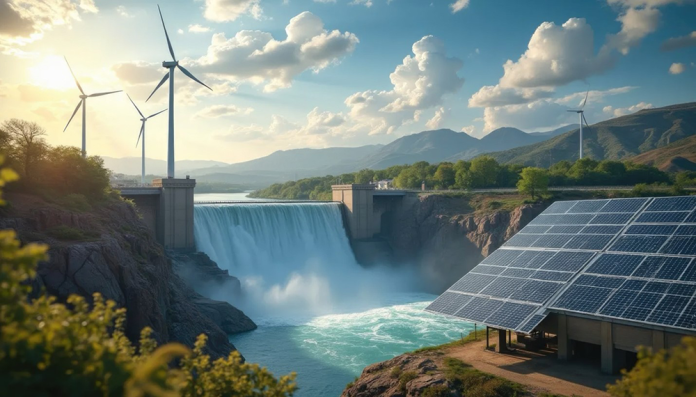Pakistan receives between 5–7 kWh/m² of sunlight each day and has strong coastal winds averaging over 7 m/s, yet millions still face power shortages and high electricity costs. My research explores a simple question: how can Pakistan use its geography to create hybrid energy systems that combine wind, solar, and micro-hydropower for reliable, affordable power?
I studied Pakistan’s renewable potential along with case studies from Jordan and Cambodia, where similar hybrid systems have already improved energy reliability. The results show that Pakistan’s landscape holds enormous untapped opportunity. The Gharo-Jhimpir corridor in Sindh alone could produce nearly 50,000 MW of wind power, while most of the country receives enough sunlight to generate solar energy year-round. In the northern valleys, river-fed streams could add over 10,000 MW of micro-hydropower. Together, these sources naturally balance each other—solar peaks in the day, wind strengthens at night, and micro-hydro runs consistently throughout the year.
Even partial adoption of hybrid systems could have a major impact. Replacing just 10 GW of fossil-fuel generation with renewable hybrids could save Pakistan over US $3 billion annually in fuel imports. Each region has its own ideal combination: Sindh’s coast suits wind-solar systems, Punjab’s canals are ideal for solar-hydro setups, and mountain regions can use small-scale hydro paired with solar to power villages.
The benefits extend far beyond economics. Cleaner hybrid systems could cut emissions, lower household energy costs, and provide continuous electricity to off-grid areas. In Swat, for example, villages powered by micro-hydro plants have reduced energy expenses by almost 90% compared to diesel generators. Expanding similar models across Pakistan could help achieve several UN Sustainable Development Goals, including clean energy, climate action, and poverty reduction.
Learning from Jordan’s hybrid wind-solar farms and Cambodia’s village microgrids, it’s clear that technology alone isn’t enough—strong policy support, local participation, and smart-grid investment are key to long-term success. Pakistan’s renewable energy goals already aim for 30–60% renewables by 2030, but reaching them will require a shift toward hybrid systems that make full use of the country’s natural diversity.
In short, hybrid energy offers Pakistan a realistic, scalable, and sustainable path toward energy independence. By designing systems that match each region’s strengths and learning from international models, Pakistan can build a future where clean, affordable electricity powers every home and industry.
By Shahmir Nadir Abdullah


